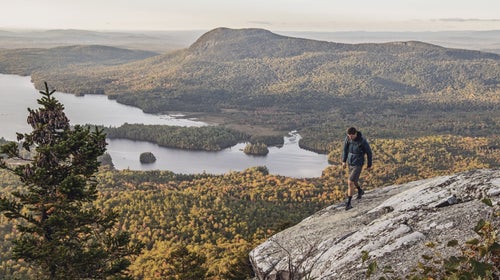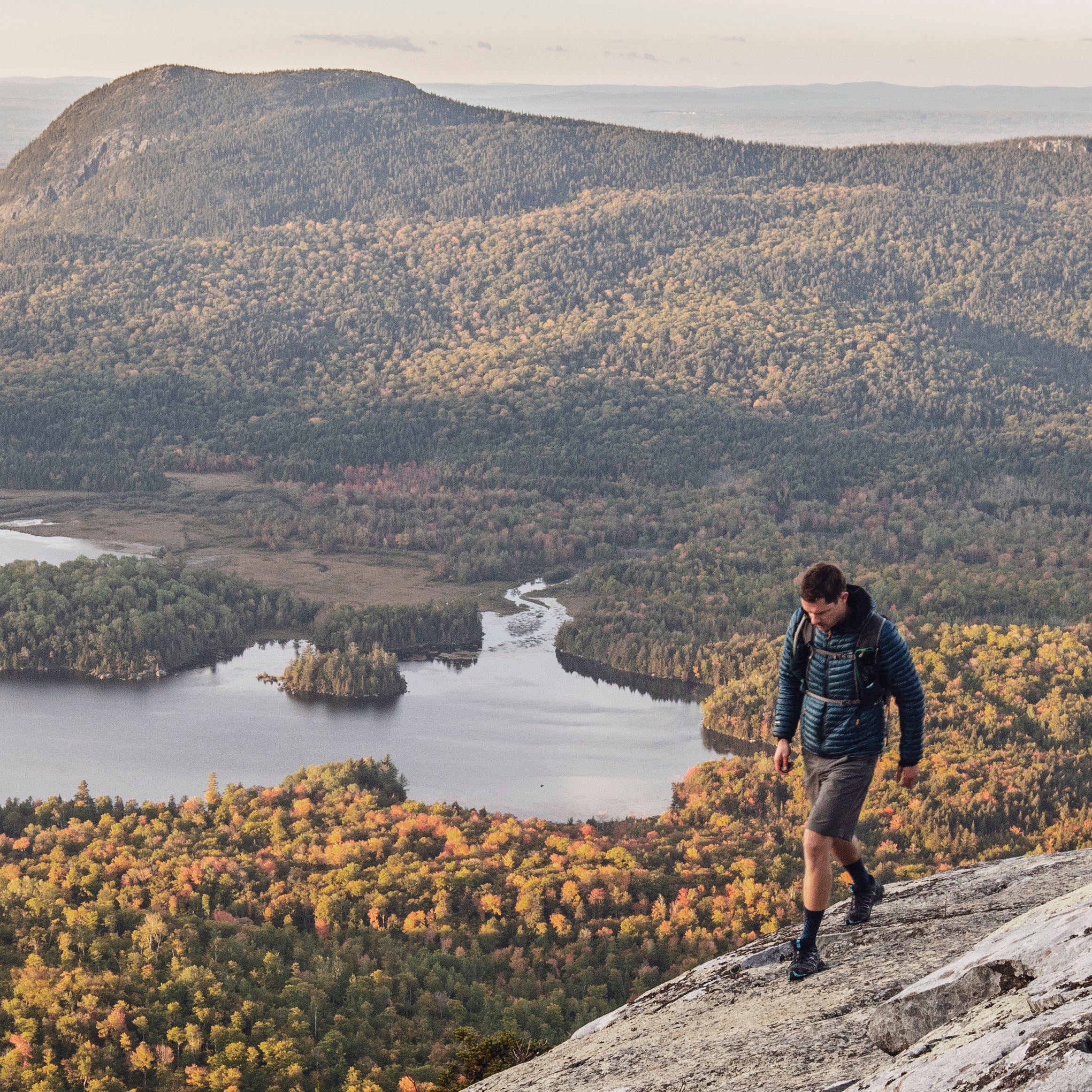Jessica Gehner and her father were about 1,400 miles into their hike along the Appalachian Trail, two-thirds of the way to the southern terminus, when disaster struck. They had scrambled up exposed rock in the White Mountains and forded swollen spring rivers in Maine with no mishaps, but on a relatively smooth section of trail near the Virginia town of Daleville, Gehner caught her toe on a root, hyperextended her knee as she fell, and ended up with a type of serious leg break known as a .
She was evacuated to nearby Carilion Roanoke Memorial Hospital, where she learned that her rehab would involve three months without putting any weight on the broken leg, followed by intensive therapy. But by the following spring, she was able to resume the hike where she left off, and still cover the last 800 miles to reach the finish in time to take her spot that fall at the University of Kentucky College of Medicine, which she’d deferred for a year to hike the trail.
This mishap, , was “the very best thing that ever happened to me in my entire life,” and it altered her professional trajectory. When she finished medical school, she returned to the scene of her accident for a residency at Carilion Roanoke, and started a career there in wilderness medicine—studying, among other things, what it takes to thru-hike the Appalachian Trail.
I met Gehner last month at the in Amsterdam, where she gave a pair of talks on her Appalachian Trail research and the medical demands of thru-hiking more generally. They were the type of talks where, to be honest, you hope you’ll never have to use any of the information presented. But if you’re an enthusiastic backpacker, the statistics suggest you’ll face a medical situation sooner or later—so with that in mind, here are a few of Gehner’s insights.
The Challenge
The trail passes through 14 states and runs just under 2,200 miles end-to-end, with the exact distance in constant flux due to trail maintenance. That means you’ll be taking about 5 million steps, Gehner says: you’re basically begging for an overuse injury. You’ll climb (and, just as torturously, descend) the full height of Mount Everest roughly 16 times, for a total of over 450,000 feet.
According to the Appalachian Trail Conservancy, thru-hikers (this, Gehner insists, is the correct spelling) cover 14.7 miles per day on average, including the zeroes they rack up on rare rest days. They carry packs weighing about 25 pounds, giving them enough food to last about a week between resupplies, and lose an average of 30 pounds over the course of the five to six months the full hike usually requires. About 90 percent of thru-hikers head north from Georgia to Maine; roughly a quarter of those who set out finish.
There are over 250 three-sided shelters along the route, so it’s possible to hike without a tent, as long as you have a high tolerance for vermin and smelly fellow hikers. Gehner slept in a lightweight hammock, but visited the shelters for some social time at meals.
The Medical Issues
There’s not a lot of data on long-distance hikers, but the existing research suggests that it’s a question of when, not if, you run into trouble. back in the late 1980s found that 82 percent of successful thru-hikers reported injuries or illnesses, causing them to miss an average of about five hiking days. In a quarter of those cases, they sought medical attention.
The most common problems, according the Gehner, are the following:
- acute musculoskeletal pain, like joint sprains and muscle strains
- blisters
- gastrointestinal illness
- skin irritation and infections
- insect bites and vector-borne illnesses like Lyme disease
There are also less common but more serious problems. Fractures, as Gehner discovered, will end your hike immediately. Hypothermia, lightning strikes, and getting lost can end your life.
The Countermeasures
I’m not a medical doctor, so I’m not going to get into, say, the relative benefits of azithromycin versus doxycycline for bacterial infections and other minutiae that the wilderness medical experts at the conference were interested in. But I’ll share a few of the insights that might be relevant to the rest of us.
- For acute joint pain, non-steroidal anti-inflammatories like ibuprofen are a good option. But remember: use them to help deal with an injury, not as a daily “vitamin” to ward off ongoing discomfort.
- Be prepared to improvise a splint and possibly crutches, because it’s very, very hard work to carry someone out.
- Gehner’s motto is “Dry feet are strong feet.” Alcohol wipes and foot powder can help ward off trench foot after days of hiking in wet conditions, and are good for blister avoidance. If you get blisters anyway, address the problem with dressings, or maybe just duct tape.
- For gastrointestinal illnesses, prevention is definitely better than a cure, which means washing your hands regularly and drinking clean water. I took a detailed look at the options for backcountry water treatment a few months ago, but Gehner’s advice for long-distance thru-hiking is to use a chemical treatment option, or at least have a chemical back-up. Filters and ultraviolet are great, but anything with moving parts or batteries becomes vulnerable over many weeks of hiking.
- On a similar note, bring a paper map and a compass, neither of which will ever run out of batteries. And better yet, know how to use them.
- Hypothermia is a risk even in temperatures as high as 65 to 70 degrees Fahrenheit if it’s wet and windy and you’re tired—a potentially lethal combination known in the scientific literature as “.” In that situation, you need to get warm, but you also need to get fuel into your body. In fact, Gehner says, cool calories (e.g. sports drink) are a higher priority than warm water if you have to choose one or the other.
Of course, it’s impossible to anticipate everything that might possibly go wrong on an extended wilderness trip. I’d highly recommend taking some sort of wilderness first aid course (I took a weekend one offered by Outward Bound, for example), and ideally having some way of calling for help—because for serious injuries in the backcountry, all you can really do is play for time while you wait for rescue. But don’t let any of that dissuade you from hitting the trails. As Gehner’s story illustrates, even a bad accident sometimes turns out to be a good break.
For more Sweat Science, join me on and , sign up for the , and check out my book .


